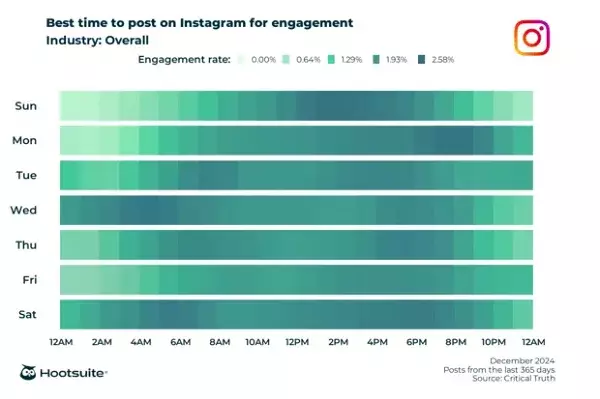Navigating the complex landscape of social media requires an understanding that extends beyond just creating high-quality content. One of the critical factors that can make or break a post is the timing of its publication. It’s not simply about crafting the perfect message or eye-catching visuals; the timing of when that information is shared can significantly impact its reach and engagement levels. With each platform boasting unique characteristics and user behaviors, deciphering the optimal times to post becomes an essential strategy for any brand looking to increase its visibility.
Recent research spearheaded by Hootsuite, analyzing over a million social media posts, sheds light on the ebb and flow of user engagement across popular social platforms. Though this data is useful for forming a baseline strategy, it is crucial to remember that these insights are merely starting points. Each business has a distinct demographic profile and content type that will influence the effectiveness of their posting times.
Instagram Engagement: After-Hours Appeal
When it comes to Instagram, a platform noted for its visual content, user engagement peaks in those golden hours when most people are winding down from their day. The research points to prime posting windows stretching from 3 PM to 9 PM on Mondays, with notable activity earlier in the day on Tuesdays between 5 AM and 8 AM. This connection implies that users are more inclined to scroll through their feeds during their commutes or while relaxing in the evenings, a behavior that marketers should capitalize on in their content calendars.
However, it’s essential to consider that posting too frequently during these active hours can saturate the audience’s feed. The more brands that adjust their schedules based on these findings, the greater the competition for users’ attention. Understanding that social media is a dynamic environment warrants a strategy that emphasizes on-the-ground testing and adaptation to one’s specific audience dynamics.
Facebook: A Quiet Morning Strategy
Facebook’s active Americans seem to prefer early mornings during weekdays, with peak engagement times occurring between 4 AM and 6 AM from Tuesday to Friday. This somewhat unconventional advice could reflect a unique group of users who check their feeds before facing the day’s distractions. The allure of lower competition during these hours could mean that brands using these slots may enjoy higher visibility and engagement.
However, this opens the conversation to the paradox of engagement: as more users take this advice to heart and flood their content during these early hours, will the effectiveness of the strategy diminish? Should brands consider less popular time slots to stand out? The balance between following trends and forging unique paths is crucial in social media strategy.
LinkedIn and the Professional Pulse
For those utilizing LinkedIn, a networking-heavy platform, knowledge of timing can facilitate meaningful engagement with a professional audience. Best practices gleaned from Hootsuite research suggest leveraging Tuesday mornings, Thursday evenings, and early Friday mornings for post timing, coinciding with natural lulls in busy workdays when users are likely to engage thoughtfully with content.
This trend underscores the necessity for a tailored approach. As professionals assess content in relation to their careers, the quality and relevance of a post during these designated times can dictate how effectively it is absorbed and shared amongst networks.
Emerging Platforms: The TikTok and Threads Equation
Venturing into the rapidly evolving world of TikTok, engagement seems to occur more robustly in the afternoons. TikTok’s nature lends itself to spontaneous creativity, and understanding user patterns can open doors to heightened visibility. Meanwhile, the newer platform Threads suggests that 8 AM PST on Tuesdays is optimal for reaching audiences, showing that experimentation continues to yield valuable insights.
The emerging dynamics between these platforms demand continuous assessment. As algorithms evolve and user habits shift, success hinges on brands remaining steadfast in their commitment to experimentation without taking previously established best practices at face value.
The correlation between timing and engagement on social media platforms is intricate but undeniably impactful. Brands must actively refine their timing strategies, acknowledging that no single approach will fit all. A keen focus on testing and analytics tailored to specific audiences can unveil paths to maximize engagement and cultivate lasting relationships with followers.

